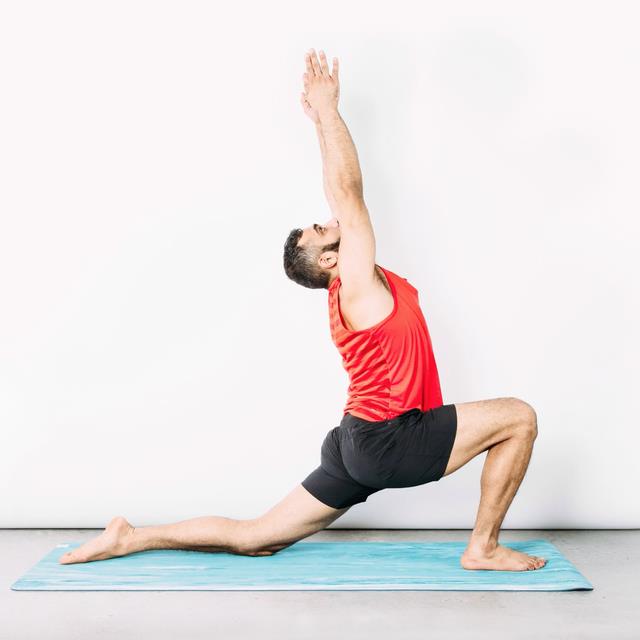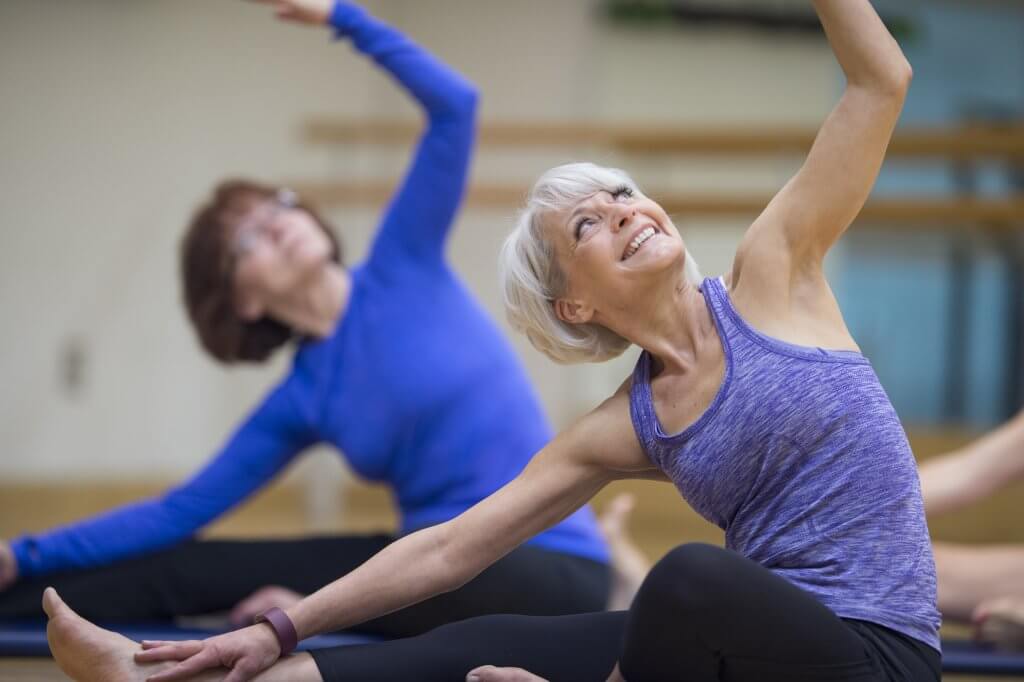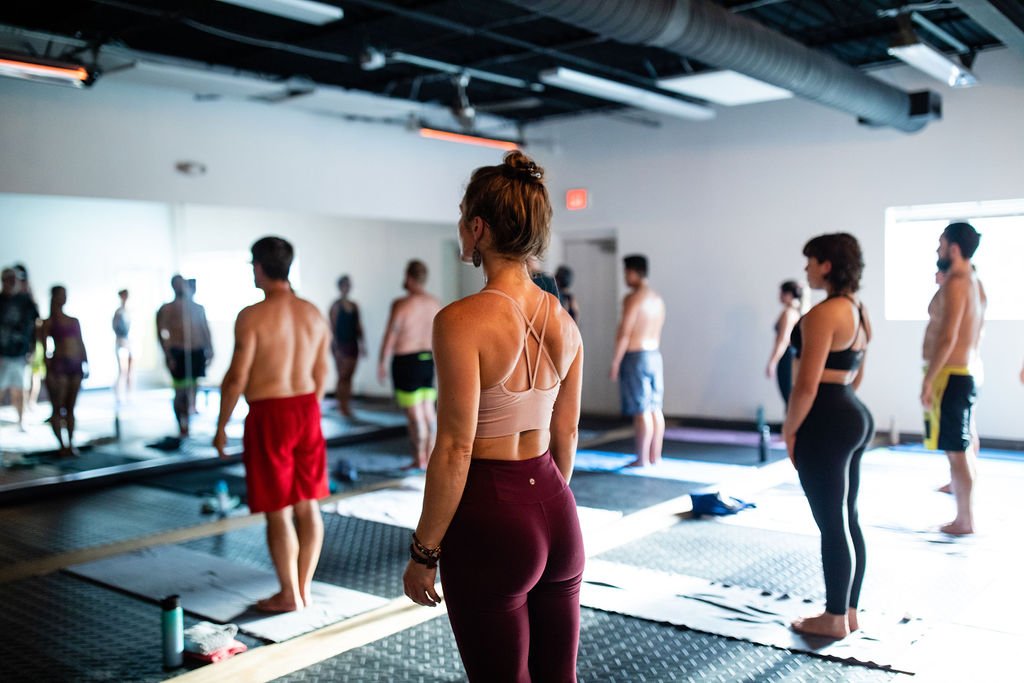
Discover the perfect yoga styles for beginner balance with this comprehensive guide.
From Hatha to Vinyasa, Iyengar to Kundalini, Ashtanga to Restorative, Yin to Prenatal, Anusara to Bikram, we've curated a list of 10 styles that will help you find your inner harmony and strength.
Whether you're new to yoga or looking to enhance your practice, these styles offer a range of benefits for both body and mind.
Get ready to embark on a transformative journey towards balance and well-being.
Hatha Yoga
Hatha Yoga is a foundational style of yoga that focuses on physical postures and breath control. It is a gentle and accessible practice that is suitable for all levels, making it perfect for beginners. One of the benefits of practicing Hatha yoga is that it helps improve flexibility, strength, and balance.
The physical postures, or asanas, help stretch and strengthen the muscles, while the breath control techniques, or pranayama, help calm the mind and reduce stress.
Hatha yoga can be easily incorporated into a daily routine by setting aside a specific time each day for practice. Whether it's in the morning to energize and prepare for the day, or in the evening to relax and unwind, dedicating even just a few minutes to Hatha yoga can have a positive impact on overall well-being.

Vinyasa Yoga
Vinyasa Yoga is a dynamic and flowing style of yoga that focuses on connecting breath with movement. It is ideal for beginners as it offers a variety of flowing sequences that help build strength and flexibility.
Through the continuous movement and synchronization of breath, Vinyasa Yoga not only enhances physical fitness but also promotes mental clarity and relaxation.
Flowing Sequences for Beginners
Beginners in yoga can benefit from practicing flowing sequences that focus on smooth transitions between poses. Vinyasa yoga, also known as flow yoga, emphasizes the connection between breath and movement, making it an ideal style for beginners who want to build strength, flexibility, and mindfulness.
Here are four reasons why flowing sequences can be beneficial for beginners:
- Fluidity: Flowing sequences help beginners develop a sense of fluidity and grace in their movements, fostering a sense of freedom and liberation.
- Strength and Flexibility: The continuous movement in vinyasa yoga helps beginners build strength and improve flexibility, enhancing their physical capabilities.
- Mind-Body Connection: Flowing sequences encourage beginners to synchronize their breath with their movements, promoting a deeper mind-body connection and a sense of inner harmony.
- Stress Relief: The combination of movement and breath in flowing sequences can help beginners release tension and stress, promoting a sense of calm and relaxation.
To incorporate flowing sequences into a beginner's yoga practice, here are some tips:
- Start Slow: Begin with simple, foundational poses and gradually add more challenging poses as you become more comfortable with the flow.
- Focus on Breath: Pay attention to your breath throughout the practice, using it as a guide for transitioning between poses.
- Modify Poses: Don't be afraid to modify poses to suit your level of flexibility and strength. Listen to your body and make adjustments as needed.
- Practice Regularly: Consistency is key. Set aside regular time for your yoga practice to experience the full benefits of flowing sequences.
Breath and Movement Connection
The connection between breath and movement is a fundamental aspect of Vinyasa yoga, enhancing the benefits that beginners can experience from practicing flowing sequences. Vinyasa, also known as flow yoga, focuses on the synchronization of breath and movement to create a dynamic and fluid practice. By coordinating each movement with a specific breath, Vinyasa yoga encourages practitioners to cultivate mindfulness and presence on the mat.
Breathing techniques play a crucial role in Vinyasa yoga. The breath becomes a guide, leading practitioners through each pose and transition. Deep, conscious breathing helps to calm the mind, increase oxygen intake, and build internal heat within the body. It allows individuals to connect with their bodies on a deeper level, facilitating a sense of freedom and liberation.

Mindfulness in yoga is cultivated through the breath and movement connection in Vinyasa practice. It encourages practitioners to stay present in the moment, focusing their attention on the breath as they flow through the sequences. This mindfulness extends beyond the mat, helping individuals to cultivate awareness and presence in their daily lives.
Incorporating breath and movement connection in Vinyasa yoga allows beginners to experience the holistic benefits of yoga practice. It promotes physical strength, flexibility, and balance while nourishing the mind and spirit. By harnessing the power of the breath, Vinyasa yoga empowers individuals to find freedom and liberation in their practice.
Building Strength and Flexibility
Building strength and flexibility in yoga can be achieved through the practice of Vinyasa. This dynamic and flowing style of yoga combines breath with movement, helping to build core strength, improve balance, and enhance stability.
Here are four key benefits of Vinyasa yoga:
- Increased muscle strength: Vinyasa yoga incorporates a range of poses that target different muscle groups, helping to build overall strength and tone the body.
- Improved flexibility: The continuous flow of Vinyasa yoga encourages deep stretching and lengthening of the muscles, increasing flexibility and promoting a greater range of motion.
- Enhanced balance and stability: Vinyasa yoga challenges your balance through a variety of standing and balancing poses, helping to improve stability and coordination.
- Mind-body connection: The synchronized movements and focus on breath in Vinyasa yoga promote a deep connection between the mind and body, fostering mindfulness and self-awareness.
Iyengar Yoga
Iyengar Yoga is a style of yoga that places a strong emphasis on alignment and precise body positioning.
One of the distinguishing features of Iyengar Yoga is the use of props such as blocks, straps, and blankets to help students achieve proper alignment and support in their poses.
This style of yoga is particularly beneficial for beginners as it allows them to develop strength, flexibility, and body awareness in a safe and supportive environment.

Props Used in Iyengar
In Iyengar yoga, a variety of props are utilized to enhance alignment and support practitioners in their poses. These props play an integral role in helping students achieve proper alignment, balance, and stability, while also providing additional support and accessibility to those with physical limitations.
Here are four commonly used props in Iyengar yoga and the benefits they offer:
- Yoga blocks: These versatile props can be used to modify poses, provide support, and deepen stretches, making them ideal for beginners or those working on improving flexibility.
- Yoga straps: Straps help practitioners achieve correct alignment by extending their reach and allowing them to deepen stretches without compromising form. They are particularly beneficial for those with tight muscles or limited flexibility.
- Yoga blankets: Blankets provide padding and support, making seated poses more comfortable, and can also be used to prop up knees, hips, or shoulders, aiding in proper alignment and preventing strain or injury.
- Yoga bolsters: Bolsters are large supportive cushions that can be used to elevate various body parts, providing comfort and relaxation in restorative poses, and improving overall stability and alignment.
Alignment Focus in Iyengar?
The emphasis on alignment in Iyengar yoga allows practitioners to cultivate precise and balanced poses, enabling them to deepen their practice and prevent injuries.
In Iyengar yoga, the focus on alignment ensures that each pose is performed with proper form and body mechanics. This attention to alignment helps to improve posture, increase strength and flexibility, and enhance body awareness.
By aligning the body correctly, Iyengar yoga practitioners can experience the full benefits of each pose, including improved balance, increased stability, and enhanced energy flow.
Additionally, Iyengar yoga offers modifications for individuals with physical limitations or injuries, making it accessible to people of all ages and abilities. These modifications allow practitioners to adapt the poses to their own unique needs, ensuring a safe and effective practice.
Kundalini Yoga
Kundalini Yoga, known for its emphasis on spiritual awakening and energy flow, offers a unique practice that combines breathwork, meditation, and dynamic movements. This ancient form of yoga focuses on awakening the dormant energy at the base of the spine, known as Kundalini, and channeling it upwards through the chakras.

Here are four reasons why Kundalini Yoga is worth exploring:
- Kundalini yoga benefits: Regular practice of Kundalini Yoga can lead to increased vitality, improved mental clarity, enhanced creativity, and a greater sense of inner peace and joy.
- Kundalini yoga meditation techniques: Kundalini Yoga incorporates various meditation techniques, including chanting mantras, focusing on specific breath patterns, and visualizations, which help to calm the mind and deepen the meditative experience.
- Awakening of Kundalini energy: Kundalini Yoga aims to awaken the dormant Kundalini energy within the body, allowing it to rise up and activate the higher chakras, leading to spiritual growth and self-realization.
- Holistic approach: Kundalini Yoga is a holistic practice that addresses physical, mental, and spiritual aspects of well-being. It offers a comprehensive system that integrates movement, breath, sound, and meditation to awaken the full potential of the individual.
With its focus on spiritual awakening and energy flow, Kundalini Yoga provides a transformative practice that can lead to profound personal growth and inner freedom.
Ashtanga Yoga
Ashtanga Yoga, characterized by its dynamic and sequential series of postures, is a rigorous practice that promotes strength, flexibility, and mindfulness. It follows a specific sequence of poses, known as the Ashtanga Yoga Primary Series, which is designed to purify the body and calm the mind. This style of yoga focuses on breath control, alignment, and movement, creating a moving meditation that helps practitioners find balance and inner peace.
One of the main benefits of Ashtanga Yoga is its ability to build strength and increase flexibility. The challenging postures and flowing sequences work the entire body, toning muscles and improving overall flexibility. Additionally, the continuous movement and focus on breath control help to cultivate mindfulness and concentration.
The Ashtanga Yoga Primary Series consists of a set sequence of poses that are performed in a specific order. This allows practitioners to develop a consistent and disciplined practice, deepening their understanding of each pose over time. The series starts with sun salutations and standing poses, gradually progressing to seated poses, backbends, and inversions. The sequence builds heat in the body, detoxifies the system, and promotes physical and mental stamina.
Restorative Yoga
Restorative yoga is a gentle and nourishing practice that promotes relaxation and healing. This style of yoga focuses on rest and rejuvenation, allowing individuals to find deep relaxation and release tension in their bodies and minds.
Here are four reasons why restorative yoga should be part of your yoga routine:

- Restorative yoga benefits: Restorative yoga helps to reduce stress and anxiety, improve sleep quality, and enhance overall well-being. It activates the parasympathetic nervous system, promoting a state of deep relaxation and restoration.
- Restorative yoga poses: Restorative yoga typically involves supported poses that allow the body to fully relax and release tension. Some common restorative poses include supported child's pose, reclining bound angle pose, and legs-up-the-wall pose.
- Nourishing and healing: Restorative yoga provides a space for individuals to nourish and heal their bodies, minds, and spirits. It offers a gentle and compassionate approach to self-care and self-love.
- Suitable for all levels: Restorative yoga is accessible to everyone, regardless of age, fitness level, or yoga experience. It is a practice that encourages individuals to listen to their bodies and honor their own unique needs.
Incorporating restorative yoga into your regular yoga practice can bring a sense of balance, relaxation, and rejuvenation to your life.
Yin Yoga
Yin yoga, a complementary practice to other more active styles of yoga, focuses on long-held poses that target the deep connective tissues of the body. It is a gentle and meditative form of yoga that encourages relaxation and mindfulness.
Yin yoga is often referred to as the 'yoga of surrender' because it requires practitioners to hold poses for an extended period of time, typically ranging from one to five minutes. This allows for a deep stretch and release of tension in the muscles, tendons, and ligaments.
One of the main benefits of Yin yoga for beginners is its ability to increase flexibility and joint mobility. The long holds in each pose help to lengthen and strengthen the connective tissues, which can improve overall flexibility and reduce the risk of injury.
Additionally, Yin yoga can also be a great practice for stress relief and relaxation. The slow, steady movements and deep breathing promote a sense of calmness and tranquility, making it an ideal choice for those looking to find balance and peace in their lives.
Prenatal Yoga
Prenatal yoga, a gentle and beneficial practice for expectant mothers, focuses on nurturing both the body and mind during pregnancy. It is specifically designed to accommodate the physical changes and limitations that occur during this transformative time.
Here are four key aspects of prenatal yoga that make it an ideal choice for pregnant women:

- Prenatal modifications: Prenatal yoga classes offer modifications to traditional poses to ensure the safety and comfort of expectant mothers. These modifications help to accommodate the growing belly, reduce strain on the lower back, and promote overall stability.
- Benefits of prenatal yoga: Prenatal yoga provides numerous benefits, including improved strength and flexibility, reduced pregnancy discomfort, enhanced relaxation and stress relief, and better overall well-being. It can also help prepare the body for labor and delivery.
- Mind-body connection: Prenatal yoga emphasizes connecting with the breath and cultivating mindfulness, which can be incredibly helpful during labor and childbirth. It allows expectant mothers to tune into their bodies, release tension, and cultivate a sense of calm.
- Community and support: Prenatal yoga classes offer a supportive environment where expectant mothers can connect with others who are going through a similar journey. This sense of community can be empowering and provide a space for sharing experiences, concerns, and joys.
Anusara Yoga
Anusara Yoga, a style that focuses on alignment and heart-centeredness, offers a balanced and mindful approach to yoga practice. Alignment principles in Anusara involve precise positioning of the body to create stability and openness. The practice emphasizes the idea that each individual is unique and encourages students to honor their own bodies' capabilities.
This makes Anusara Yoga particularly beneficial for beginners, as it allows them to build strength and flexibility at their own pace. By focusing on alignment, students can avoid injury and develop a strong foundation for their practice.
Additionally, Anusara Yoga helps cultivate a sense of joy and positivity, as it encourages practitioners to connect with their hearts and embrace the present moment. Overall, Anusara Yoga provides a nurturing and empowering experience for beginners, fostering both physical and emotional well-being.
Bikram Yoga
Bikram Yoga, a style known for its hot and humid practice environment, offers a unique and challenging experience for beginners seeking to enhance their physical and mental well-being. Here are four key aspects that make Bikram Yoga stand out:
- Building heat: Bikram Yoga is performed in a room heated to 105 degrees Fahrenheit with 40% humidity. This heat helps to warm up the muscles, allowing for deeper stretching and increased flexibility.
- Physical benefits: The intense heat in Bikram Yoga promotes detoxification by stimulating sweat, which helps to release toxins from the body. It also improves cardiovascular health, builds strength, and enhances endurance.
- Mental benefits: The combination of the challenging physical practice and the heat helps to promote mental focus and concentration. It can also reduce stress and anxiety, leaving practitioners feeling more calm and centered.
- Improved flexibility: The heat in Bikram Yoga allows for safer and deeper stretching, leading to increased flexibility over time. This can help prevent injuries and improve overall mobility.
Frequently Asked Questions
Can Beginners Practice Hatha Yoga?
Hatha yoga is an ideal style for beginners looking to improve flexibility and balance. It provides a gentle introduction to foundational poses and breathing techniques, making it accessible and beneficial for all levels of practitioners.
What Are the Benefits of Practicing Vinyasa Yoga?
Vinyasa yoga offers numerous benefits, such as improved flexibility, strength, and cardiovascular health. To start practicing vinyasa yoga, beginners should focus on mastering the basic poses and synchronizing movement with breath for a flowing practice.
How Is Iyengar Yoga Different From Other Yoga Styles?
Iyengar yoga is an alignment-based practice that focuses on precision and proper body alignment. One of its distinguishing features is the use of props to support and enhance the practice, making it suitable for practitioners of all levels.

Is Kundalini Yoga Suitable for Pregnant Women?
Kundalini yoga can be suitable for pregnant women, but it is important to practice with caution and under the guidance of a qualified instructor. Safety considerations and modifications may be necessary for the well-being of both the mother and the baby.
Can Restorative Yoga Help With Anxiety and Stress?
Restorative yoga is an excellent practice for reducing anxiety and stress. It promotes deep relaxation and encourages the body's natural healing abilities. By incorporating gentle poses and guided meditation, restorative yoga offers numerous benefits for relaxation and overall well-being.
 Business & FinanceHealth & MedicineTechnologyLifestyle & CultureScience & EnvironmentWorld NewsPrivacy PolicyTerms And Conditions
Business & FinanceHealth & MedicineTechnologyLifestyle & CultureScience & EnvironmentWorld NewsPrivacy PolicyTerms And Conditions
